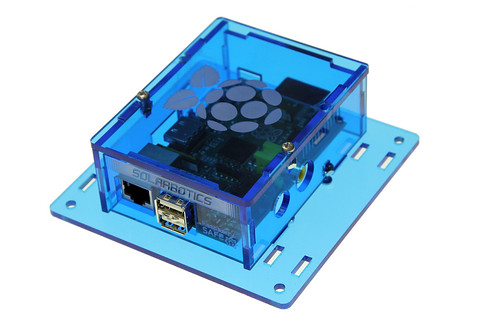 |
| License: Creative Commons image source |
Laptop Per Child
A conference in Johannesburg, South Africa, has recently begun to train teachers in using the Sugar learning platform and associated devices to educate children, and therefore provide access to IT facilities they may not otherwise have. The laptops designed for this platform are hybrid PCs which can either be used as a standard notebook computer, or the screen can be rotated to allow use as a tablet with the interactive touch screen. The teachers attending these programmes also receive full training in troubleshooting and repairs of these devices, so that when the inevitable breakage occurs, the teachers are able to put it right.
Raspberry Pi
For any child with an interest in computer programming or electronics, investing in a Raspberry Pi microcontroller is a perfect way to spur on their enthusiasm. The Raspberry Pi can be loaded with programs designed by students to control various input and output devices connected to the board, perfect for anything from a group of primary school pupils to an A-Level Engineering class. This device was produced in 2006 at Cambridge University in order to address the perceived drop in skill level of A-Level students enrolling in computer related courses at the University. The Raspberry Pi can be directly connected to a display device to allow debugging of the program or to facilitate an interactive response from a touch screen device. Network connectivity also allows the user to design apps controlled by online accounts such as Twitter and Facebook, allowing children to gain an important foothold to the ever expanding online computing platforms in common use today.
 |
| License: Creative Commons image source |
PIC Logicator
Some children are much too young to make full use of a C derived programming language designed to run a microcontroller; that’s where PIC Logicator comes in. Logicator is designed to make using a PIC chip easy, allowing you to design commands for the control of simple input and output devices. The interactive flowchart system that Logicator uses to program the device can be a jumping off point for learning the PIC Basic language, and programming ever more complicated devices as skills develop. A knowledge of PIC Basic is a great way for children to see how the commands they type on the computer can have real world effects, and inspire in them a passion for writing effective programs.
Kodu Game Lab
Kodu was originally released on 30th July 2009 and is designed to be a visual programming language to get children interested in the world of game programming. The goal of Kodu is to spark the imagination of pupils, inspiring them to program more and more complex games. The ultimate goal is for the children to outgrow Kodu and dip into other languages to accomplish ever more imaginative and sophisticated designs.
 |
| License: Creative Commons image source |
Sifteo Cubes
Sifteo Cubes are a new craze in computer technology set to revolutionise how children learn and interact with technology. The miniature touch screen computers have built in accelerometers to sense tilt and movement, as well as sensors on each edge to detect interaction with other Sifteo cubes. These devices open up a wide range of possibilities within games and early education, and no doubt will soon become a fun part of many classrooms across the country.
Early exposure to technology is therefore critical to develop a love of technology in later life. With the devices presented in this article you should have no trouble inspiring a class to embark upon a productive and inventive career in this field.
Sources
One Laptop One Child – http://blog.laptop.org/
Raspberry Pi – http://www.raspberrypi.org/about
PIC Logicator – http://www.logicator.co.uk/
– http://www.picaxe.com/
Kodu Game Lab – http://en.wikipedia.org/wiki/Kodu_Game_Lab
Sifteo Cubes – https://www.sifteo.com/
This post is brought to you by World Class Teachers, a leading supply teacher jobs agency in London.
This article is posted by Rizwan Ahmad Author and founder of cyberockk.com, He is a tech blogger from India and he loves to share his thoughts by writing articles on this site to the different topics related to technology world,








